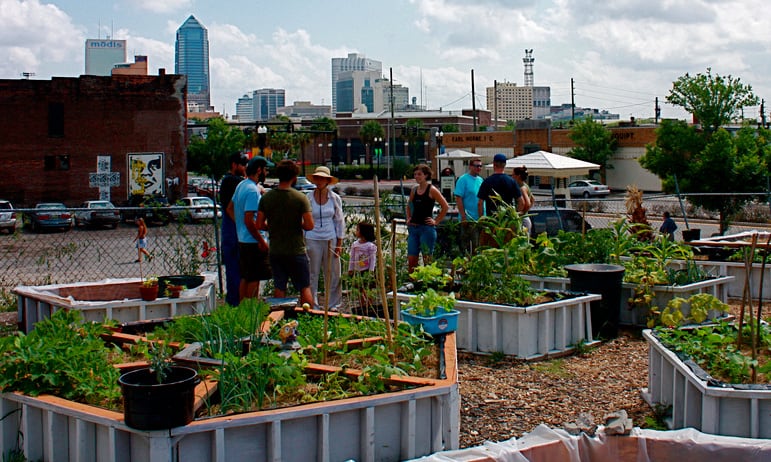City Blooming Things To Know Before You Get This
City Blooming Things To Know Before You Get This
Blog Article
The Best Guide To City Blooming
Table of ContentsThe City Blooming PDFsThe 20-Second Trick For City BloomingWhat Does City Blooming Mean?City Blooming Things To Know Before You Get ThisAll About City Blooming
Intrigued in expanding food available in the City of Chicago? Assuming about beginning an area garden? Modifications to the Chicago Zoning Statute enable farming uses like community yards and urban ranches in numerous components of the city. Below is a list of often asked concerns concerning the policies and policies that cultivators should think about when preparing an urban farming project.
The zoning amendment does not customize any type of various other codes handling composting, structure licenses, acquiring or renting City possessed residential or commercial property, organization licenses or environmental contamination. There are existing codes that manage these issues and they continue to be in full impact and might be applicable to your task. Neighborhood gardens are usually owned or managed by public entities, civic organizations or community-based companies and preserved by volunteers.
Urban ranches expand food that is planned to be marketed, either on a nonprofit or for-profit basis. Due to their business purpose, city farms need an organization license.
The Only Guide to City Blooming
The quantity of garden compost product can not go beyond 25 cubic backyards at any kind of offered time according to the standards in 7-28-715 of the City's Municipal Code. Because the soil at a lot of new garden websites needs amending, garden compost, dirt, wood chips, or various other materials can be obtained to construct or boost the expanding room.

If a building authorization is called for then the hoophouse will be thought about an accessory building. You can figure out even more about the structure authorization requirements by contacting the Department of Structures. The 25,000-square-foot size restriction is intended to avoid a solitary neighborhood yard from dominating an offered block or taking away from the block's existing domestic or business character.
The limitation does not put on gardens situated in Public Open Room (POS) districts. Can there be greater than one area yard that is 25,000 square feet on a single block? Yes. The dimension limit puts on individual yards, not to private blocks. No. Fencing is not required, however, yards that have big parking lot might be required to set up fencing or other landscape design functions.
Top Guidelines Of City Blooming
B1 & B2 districts call for that all industrial usage activities be conducted indoors. R areas limit industrial task. The guidelines mirror the function and intent of the Zoning Code. Is fence needed for metropolitan ranches? Yes. Fences might be required, together with landscape design and screening, for sure parking lot and outdoor job or storage areas depending on place and the details task occurring.
Yes. Urban farms need structure permits and zoning authorizations prior to construction. Various other kinds of city evaluation may be required depending upon particular structures, activities, size, landscaping, licensing, public heath and stormwater administration issues. Much of these needs are determined in the project style or allowing process, nevertheless, the applicant might be responsible to independently determine certain licenses or permits that might be required.
Yes. The sort of certificate is identified by what is happening at the website. The Division of Company Matters and Consumer my website Protection can assist determine the certain sort of service permit that's needed. Yes. Off street car parking is needed for many commercial projects in Chicago. The needed number of vehicle parking rooms is based upon the variety of staff members working with website and not the square video of the growing room.
7 Simple Techniques For City Blooming

A city farm can offer compost product generated on site, however, the procedure has to conform with the laws in 7-28-715 of the Chicago Municipal Code. Aquaponic systems are allowed indoors on city ranches in numerous zoning districts.
Up to five hives or swarms of honey bees might be kept as an accessory usage. Beekeepers need to register with the Illinois Department of Farming. To learn more about the proposed zoning modification you might get in touch with the Department of Real Estate and Economic Advancement, Bureau of Planning and Zoning at 312.744.8563.
, which takes area in rural locations at the side of suburban areas.
Not known Factual Statements About City Blooming
It can involve a movement of natural cultivators, "foodies" and "locavores", who look for to develop social media networks established on a common ethos of nature and community holism. These networks can create using formal institutional support, becoming incorporated into regional community preparation as a "shift community" movement for lasting city growth.
Some of the first proof of metropolitan farming comes from Mesopotamia.
Report this page